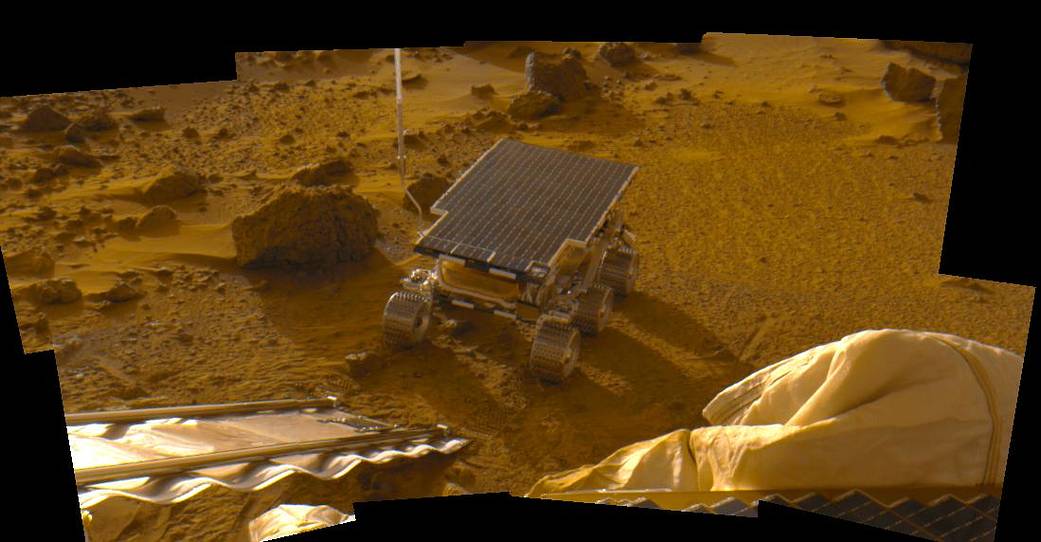这幅由8张图片拼接成的全景图是美国宇航局在火星上的第一个漫游者索杰纳拍摄的,它是在火星上第二天的下午晚些时候拍摄的,作为“保险全景”的一部分。索杰纳于1997年7月4日登上火星探路者号。
这张彩色图像是为防止相机在部署时出现故障而设计的。然而,相机的部署是成功的,使得保险全景将在几周后下线到地球。具有讽刺意味的是,由于Sol 2上的相机和相关着陆器/探测器硬件的无损数据压缩和相对无尘的状态,保险全景图包含了一些质量最好的图像数据。
索杰纳花了83天的时间进行了一项为期7天的计划,包括探索火星地形,获取图像,并进行化学、大气和其他测量。探路者收到的最后一次数据传输是在世界协调时间1997年9月27日10点23分。虽然特派团的管理人员在随后的5个月中设法恢复完全的通讯,但成功的任务于1998年3月10日结束。
现在,美国宇航局正在采取措施,开始一个新的探索时代。美国宇航局将与美国公司和国际合作伙伴合作,推动人类探索月球和登陆火星,在未来10年内在月球上建立人类永久的基地。
This 8-image mosaic is of Sojourner, NASA’s first rover on Mars, and was acquired during the late afternoon on Sol 2, the second Martian day on the planet as part of an “insurance panorama.” Sojourner arrived aboard the Mars Pathfinder on July 4, 1997.
This color image was designed as “insurance” against camera failure upon deployment. However, the camera deployment was successful, leaving the insurance panorama to be downlinked to Earth several weeks later. Ironically enough, the insurance panorama contains some of the best quality image data because of the lossless data compression and relatively dust-free state of the camera and associated lander/rover hardware on Sol 2.
Sojourner spent 83 days of a planned seven-day mission exploring the Martian terrain, acquiring images, and taking chemical, atmospheric and other measurements. The final data transmission received from Pathfinder was at 10:23 UTC on September 27, 1997. Although mission managers tried to restore full communications during the following five months, the successful mission was terminated on March 10, 1998.
Right now, NASA is taking steps to begin a new era of exploration. Working with U.S. companies and international partners, NASA will push the boundaries of human exploration forward to the Moon and on to Mars, establishing a permanent human presence on the Moon within the next decade.
Image Credit: NASA/JPL



